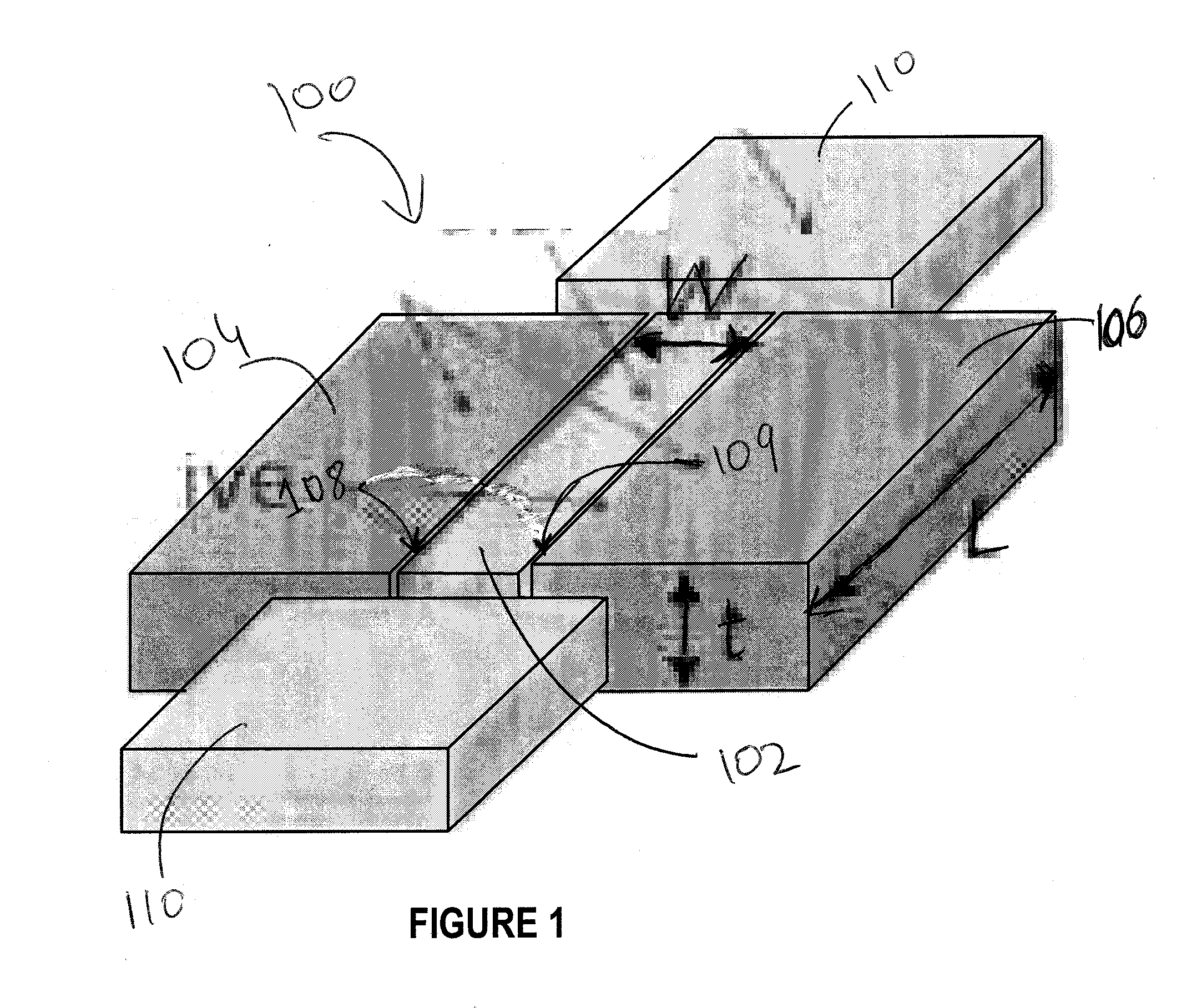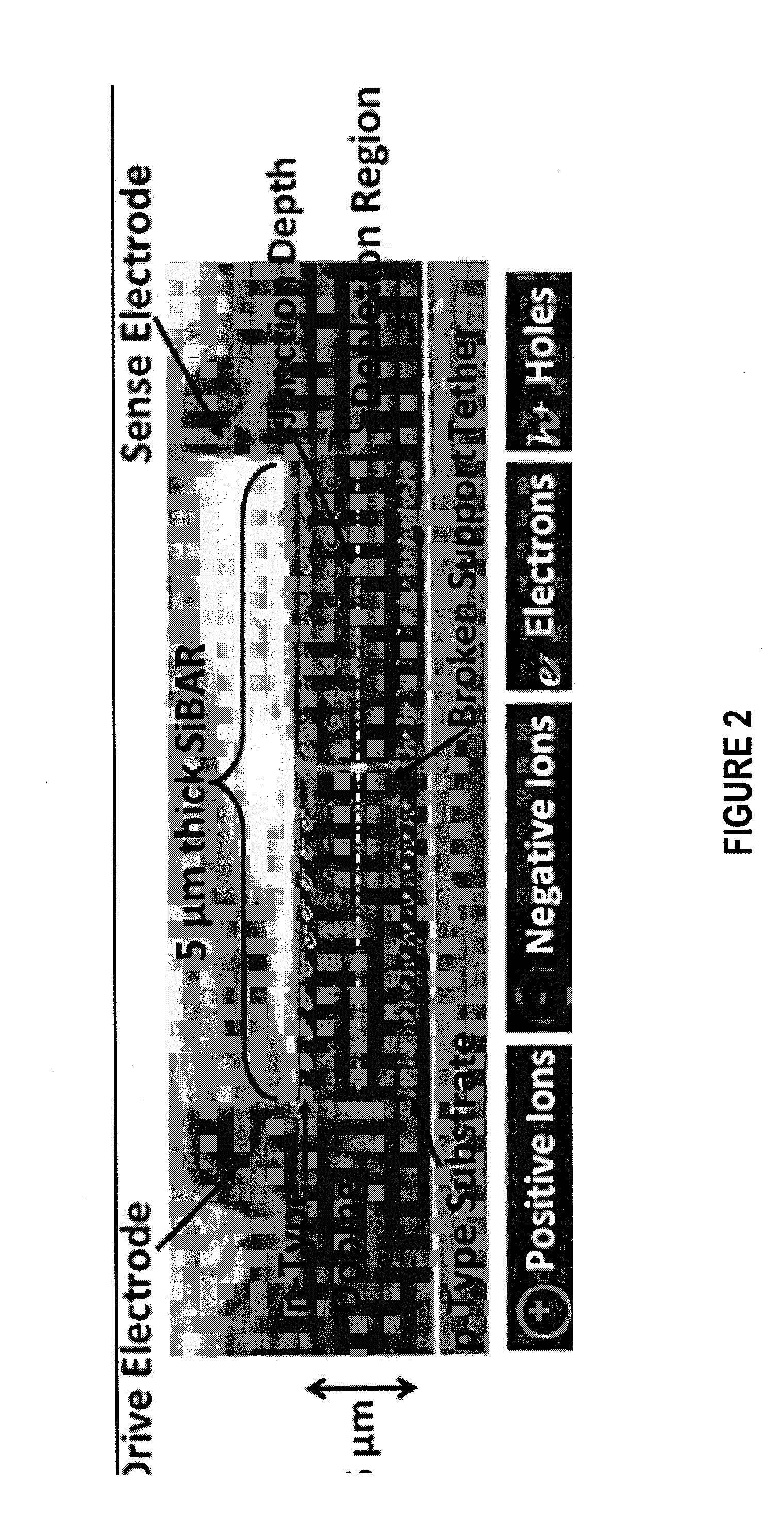Temperature Compensation in a Semiconductor Micromechanical Resonator Via Charge Carrier Depletion
a micromechanical resonator and temperature compensation technology, applied in the direction of generator/motor, device details, device details, etc., can solve the problems of reducing the q of the resonator, impractical compensating materials with positive tcf on silicon, etc., and achieve the effect of minimizing the flow of free charge carriers
- Summary
- Abstract
- Description
- Claims
- Application Information
AI Technical Summary
Benefits of technology
Problems solved by technology
Method used
Image
Examples
Embodiment Construction
[0027]Technologies herein are directed towards compensating the temperature coefficient of silicon micromechanical resonators without compromising on the quality factor of such resonators. To achieve temperature compensation in silicon micromechanical resonators, the flow of free charge carriers in response to the propagation of acoustic waves in a silicon micromechanical resonator needs to be minimized. The flow of free charge carriers can be minimized by degenerate doping of the silicon micromechanical resonator or by lightly doping the silicon micromechanical resonator to create a pn-junction based free charge carrier depletion region.
[0028]The present disclosure will be more completely understood through the following description, which should be read in conjunction with the drawings. In this description, like numbers refer to similar elements within various embodiments of the present disclosure. Within this description, the claims will be explained with respect to embodiments. ...
PUM
 Login to View More
Login to View More Abstract
Description
Claims
Application Information
 Login to View More
Login to View More - R&D
- Intellectual Property
- Life Sciences
- Materials
- Tech Scout
- Unparalleled Data Quality
- Higher Quality Content
- 60% Fewer Hallucinations
Browse by: Latest US Patents, China's latest patents, Technical Efficacy Thesaurus, Application Domain, Technology Topic, Popular Technical Reports.
© 2025 PatSnap. All rights reserved.Legal|Privacy policy|Modern Slavery Act Transparency Statement|Sitemap|About US| Contact US: help@patsnap.com



